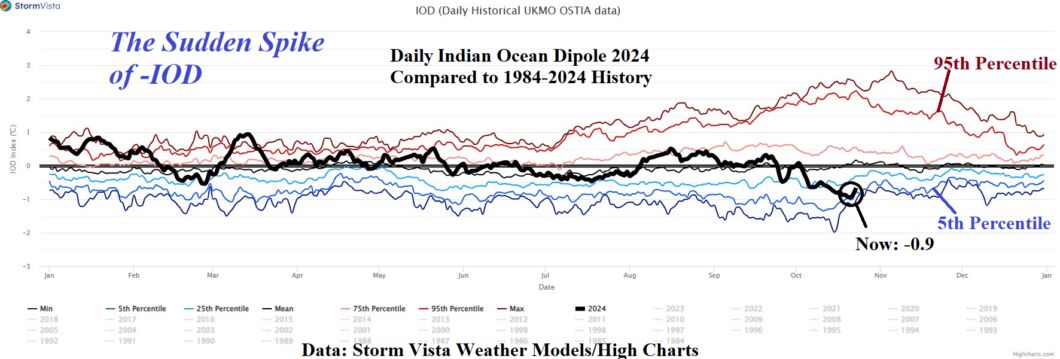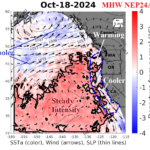
Record Strength and Length of -PDO Regime Despite Warm Northeast Pacific!
10/21/2024, 5:37 am EDT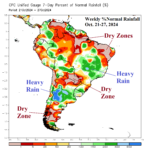
MJO-Inspired Brazil Rains
10/29/2024, 5:36 am EDTExecutive summary: A sudden negative Indian Ocean dipole has formed. Causal to the sudden -IOD is a northwest surge of a marine heat wave off the northwest coast of Australia into the southern tropical Indian Ocean. Forecast models are uncertain as to the evolution of the -IOD regime. Probability forecasts support a weak to moderate -IOD into early 2025 alongside similar intensity cold ENSO. If so, analogs suggest a significant wet climate for Southeast Asia/Northern Australia and possibly North and East Brazil for NOV/DEC/JAN.
Discussion: During the past month, a rapid descent of the daily Indian Ocean dipole (-IOD) index into a sharp negative phase is observed (Fig. 1). A few days ago, the daily -IOD reached the 5th most negative percentile in the 1984-2024 climatology. Proposed as the catalyst to the sudden and sharp -IOD regime is northwestward expansion of a marine heat wave (MHW) off the northwest coast of Australia into the eastern tropical Indian Ocean (Fig. 2). During this sequence, the western Indian Ocean tropical SSTA has cooled. The 1-year change is dramatic and further emphasizes the -IOD evolution (Fig. 3). Australia Bureau of Meteorology (ABOM) indicates the sudden negative phase is temporary and a full-blown negative IOD heading into 2025 is not certain. The International Multi-modal Ensemble (IMME) global SSTA probability forecast for December 2024 indicates a weak to moderate likelihood of -IOD continuing with similar probability for La Nina (Fig. 4). The ABOM projection of -IOD is supported by the last 4 -IOD analog years where -IOD formed during Q3, peaked in Q4 and ended before the new year (Fig. 5). Of course, the current -IOD spike follows neutral IOD from previous months indicating a difference possibly driven by the uniqueness of the MHW involvement. Interestingly, each IOD analog cited was accompanied by La Nina (Fig. 6) which is trying to develop now. In summary, a weak to moderate -IOD may linger into early 2025 and be accompanied by an evolving weak to moderate La Nina. If so, the NOV/DEC/JAN (precipitation analog) climate favors a widespread wetter than normal regime across Southeast Asia to Northern Australia (Fig. 7) and possibly motivating a wet North and East Brazil climate while Argentina is dry (Fig. 8).

Fig. 1: Daily IOD index in 2024 compared to 1984-2024 climatology.
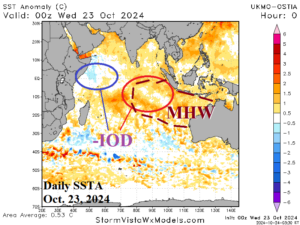
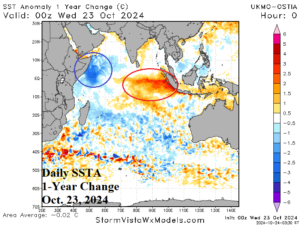
Fig. 2-3: The daily Indian Ocean SSTA analysis valid for Oct. 23, 2024, and the 1-year change.
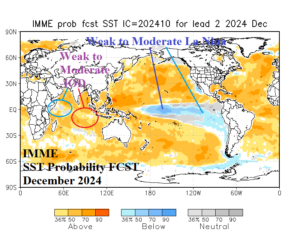
Fig. 4: IMME global SSTA probability outlook for December 2024.

Fig. 5: Comparing the last 4 -IOD events to 2024.
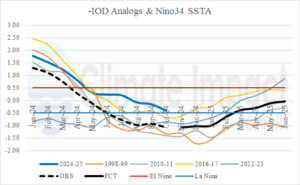
Fig. 6: The Nino34 SSTA is typically in La Nina during -IOD events.
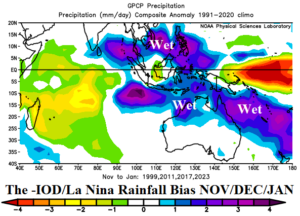

Fig. 7-8: If -IOD/La Nina evolves, the precipitation climate bias for Southeast Asia/Australia and South America is indicated.

